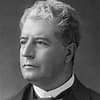Remembering 80 Years: The Legacy of the Burma-Thailand Railway
16 October 2023
The harrowing tale of the prisoners of war and countless others subjected to forced labour on the Burma-Thailand Railway during World War II remains an indelible chapter in Australia’s wartime annals. This story, marked by immense suffering and loss, stands as a stark testament to the atrocities of armed conflict.
Conceived in 1942 and completed the following year, the Burma-Thailand Railway was envisaged as a strategic conduit to facilitate the supply of Japanese forces stationed in Burma. The initial sea routes, which the Japanese relied upon, became increasingly imperilled following the Allied successes in the Battles of the Coral Sea and Midway in 1942.
In a race against time, aiming to rapidly finalize the railway to fortify their troops in Burma for imminent operations targeting British India, the Japanese forcibly enlisted the labour of approximately 60,000 Allied captives. These prisoners were sourced from various regions across Asia and the Pacific, having been captured in early 1942.
With the prisoners struggling to meet the ambitious schedules, the Japanese authorities initiated the gruelling ‘Speedo’ phase, an intensive work regime stretching almost around the clock. In addition to the Allied prisoners, nearly 200,000 rǒmusha (Asian laborers) were compelled into this daunting project.
These workers confronted extreme adversities: debilitating conditions, scarcity of food, severe maltreatment, and rampant diseases, all while they endeavoured to complete the daunting 415-kilometer railway. A particularly infamous section, Hellfire Pass, witnessed the tragic demise of 700 Allied prisoners between April and June 1943. The work was so relentless that Bombardier Hugh Clarke of the 2/10th Australian Field Regiment, a survivor of this ordeal, hauntingly compared the railway’s night-time construction scene to ‘Dante’s Inferno’, with prisoners labouring under the glow of blazing torches.
Of the workforce, nearly 13,000 were Australian prisoners of war. The railway’s completion on 16 October 1943 marked a bleak milestone: a loss of roughly 2,800 Australians, 11,000 Allied troops, and 75,000 rǒmusha. During World War II, the Japanese took over 22,000 Australians captive. Tragically, more than a third of these individuals were denied their journey back home.
In a recent tribute to this poignant chapter, the Department of Veterans’ Affairs’ Hellfire Pass Interpretive Centre in Kanchanaburi, Thailand, was lauded with a gold standard accolade at the 2023 Thailand Tourism Awards, securing its place in the Historical and Culture category. The centre and its accompanying walking trail serve as a solemn homage to those who endured unimaginable hardships and those who made the ultimate sacrifice during the Burma-Thai railway’s construction.
Now, eight decades later, as we reflect upon this sombre period, we bow our heads in tribute to those brave souls. Their legacy and sacrifice continue to echo through time.
Lest We Forget.




